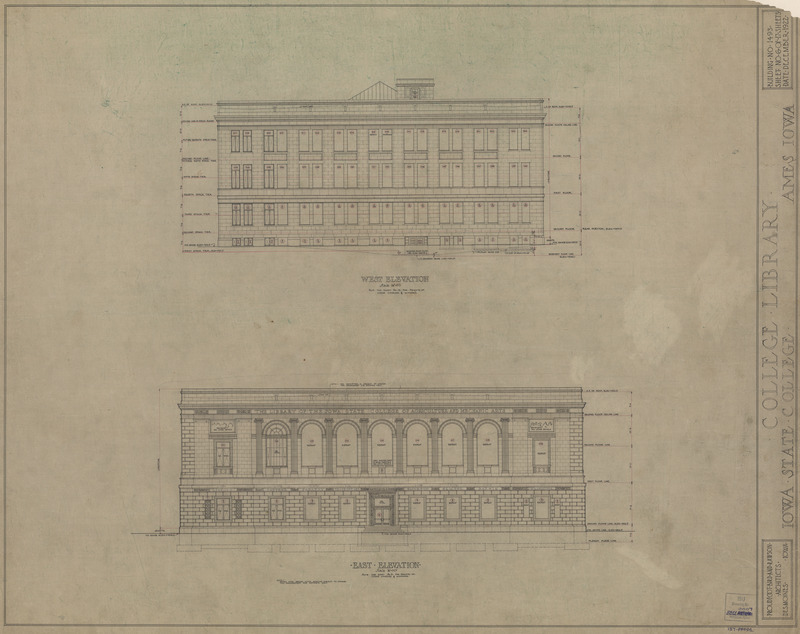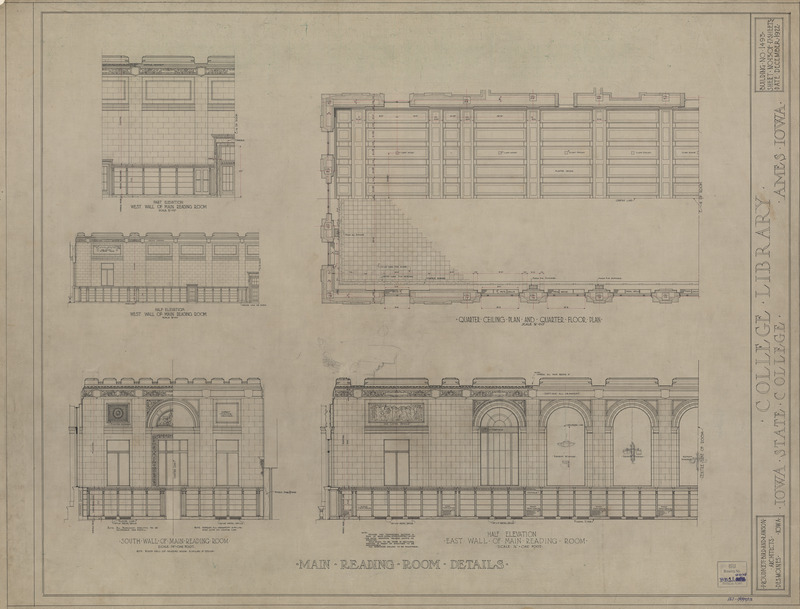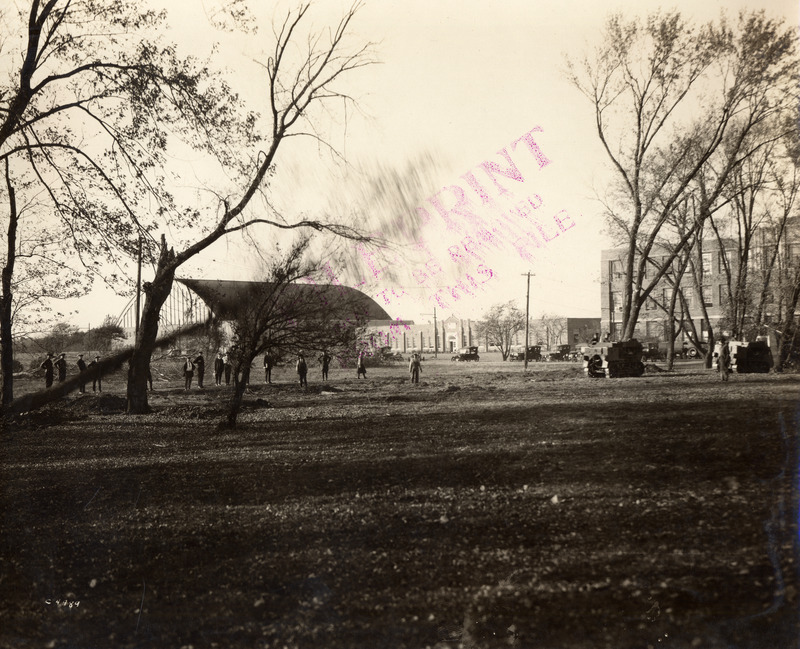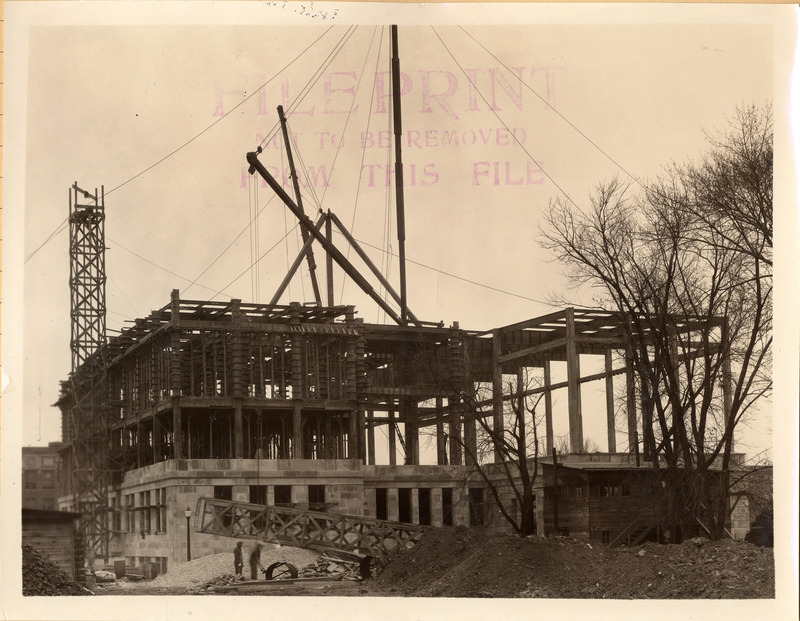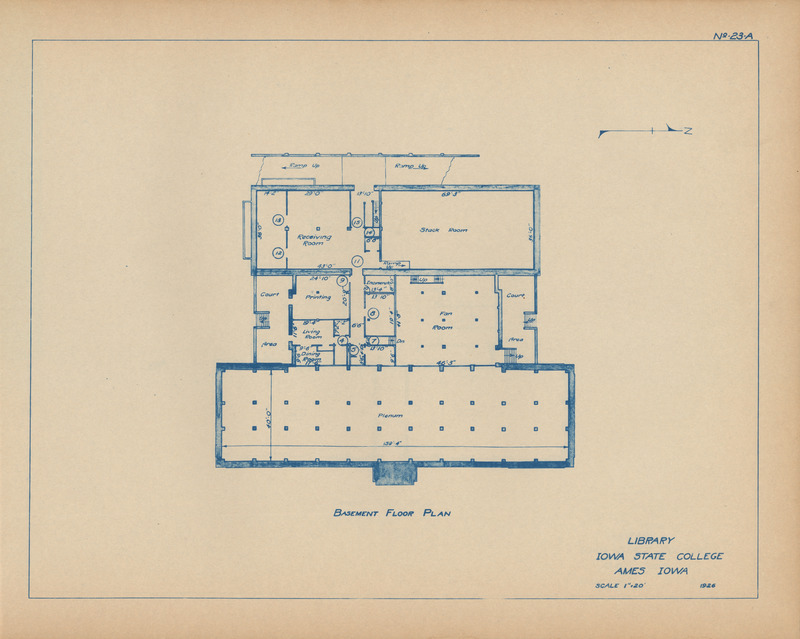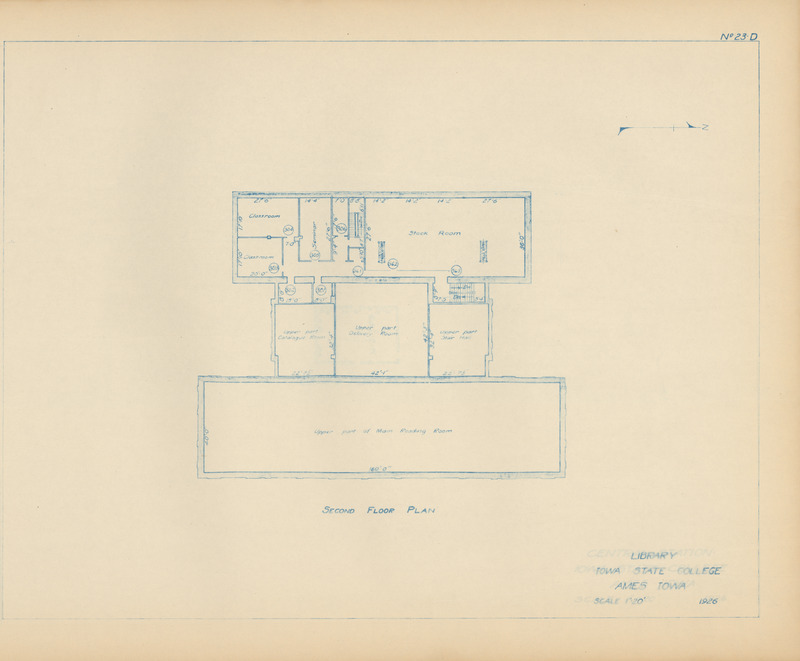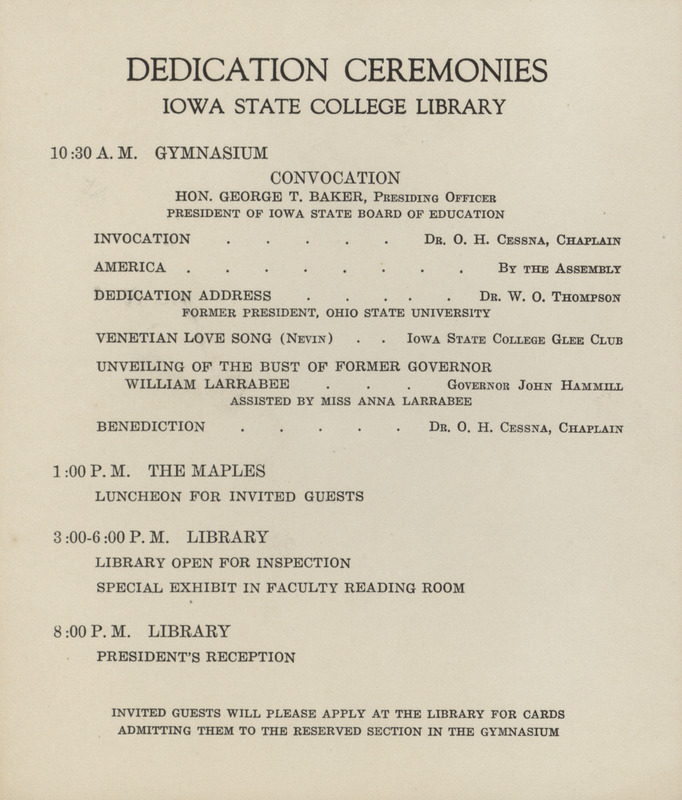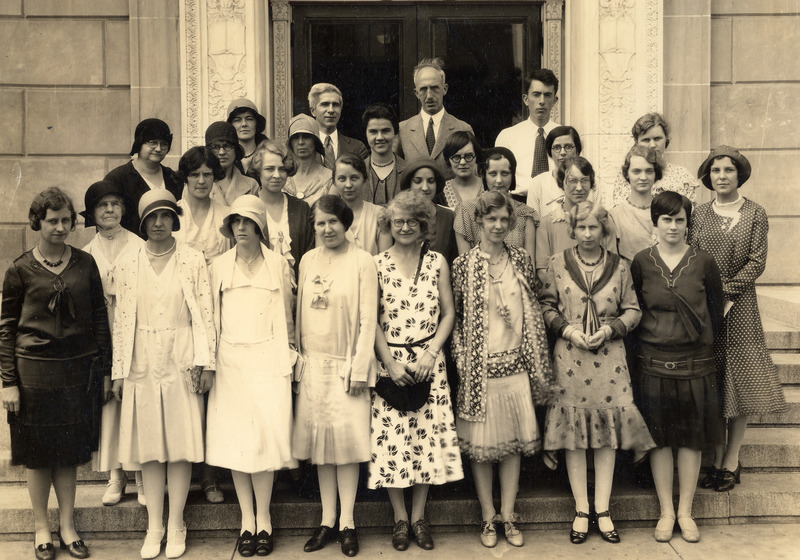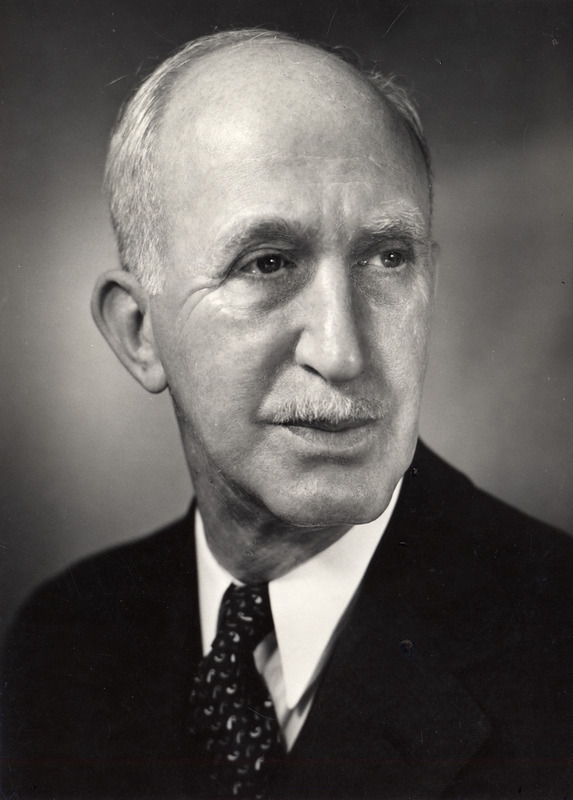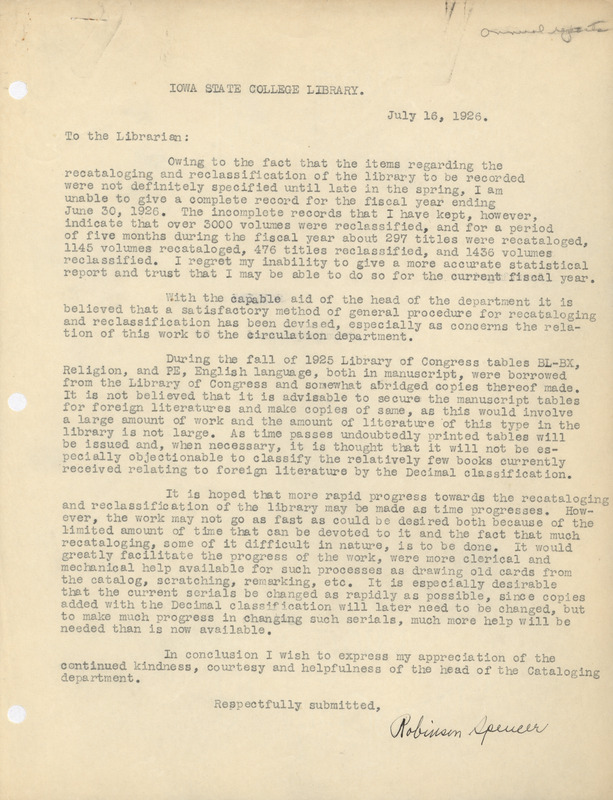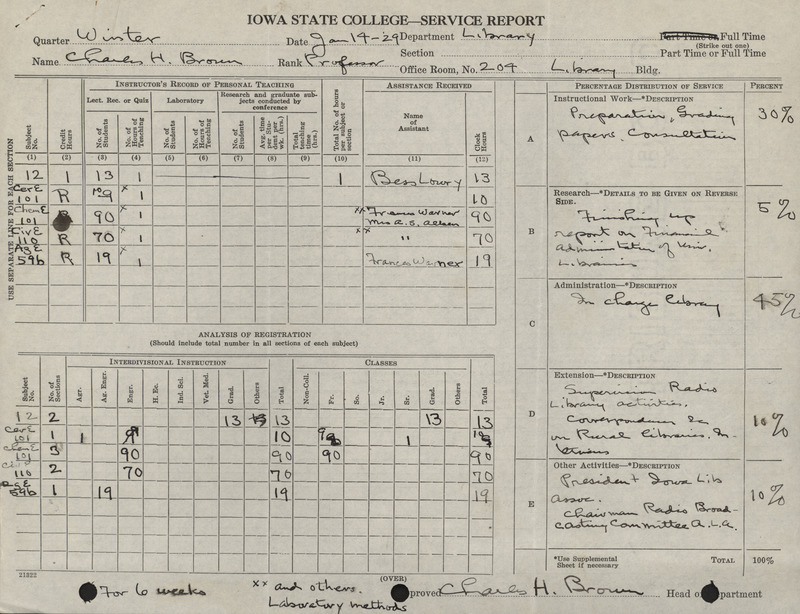1925 Building
Finally, in 1919, $400,000 was approved by the Board for a library building. Design of the building was completed in the fall of 1922 by Proudfoot and Bird for the three-story, 51,853 square foot library. The Board approved these architectural plans in September, and in October 1922, work began to prepare the site for construction with the removal of trees, followed by excavation and the pouring of the foundation. The following spring, the foundation was poured, and the ironwork for the superstructure began going up.
A year later, on October 11, 1923, an informal ceremony was held for the dedication of the cornerstone. Classes were dismissed at 11:30, followed by short speeches by a number of dignitaries, and a time capsule was placed in the cornerstone.
Construction continued over the next year, and on January 6, 1925, the first floor of the new Library opened. A month later, all remaining volumes had been moved from Beardshear and the Library fully opened to patrons. With this new space, many of the departmental libraries established in 1913 were closed. The books were moved to the new Library to facilitate centralized library services. The building had a capacity of 150,000 volumes and seating for several hundred patrons.
The “H” type building consisted of a basement, two floors on the east wing, and three floors on the west wing with a connecting corridor. The basement housed a receiving room, stacks, printing office, incinerator, and living quarters for a janitor. The first floor’s east wing held the assigned reading room and periodicals room, the corridor held offices and restrooms, and the west wing held a faculty reading room, staff lounge, and stacks. The second floor’s east wing was entirely the main reading room, the corridor held bibliographies and catalogs, and the west wing held the cataloging and ordering units of the library, office space, stacks, and cubicles for students. The third floor of the west wing held seminar and class rooms and additional stacks.
The College hosted a formal dedication ceremony for the new Library on January 21, 1926, in State Gymnasium. Invitations were extended to all land grant universities and colleges, all public libraries in the state of Iowa, all colleges and universities in the state of Iowa, Iowa members of US Congress, members of the State of Iowa Legislature, early graduates of the college, and a number of other colleges and libraries from around the country. Approximately 2,500 people attended the ceremony, followed by a luncheon for invited guests and an open house and reception in the new building.
Charles Brown was hired as Dean of the Library in 1922. Under his leadership, the library would grow to become one of the major land-grand university libraries in the United States. He would expand the collections, update the catalog, and improve services to faculty, staff, students, and the wider public.
Brown published an article in the June 15, 1925 edition of Library Journal, sharing the new library with colleagues around the country.
After taking over as Head Librarian, Charles Brown worked to professionalize and expand the staff of the library. With a new larger space and the expanded services, increased staffing was needed to operate the library. By the time the new building opened, all full-time staff had turned over, with four of the seven having degrees in Library Science, and the number of part-time staff increased from 13 to 19.
In 1925, the library instituted the Library of Congress classification system. This saw any new acquisition being cataloged in this system while also reclassifying the current holdings from the Dewey Decimal System. This work was done when time and staff availability allowed, which resulted in the project running until 1963.
An undergraduate course in library instruction has been required for freshmen since 1891. In 1925, Dean Charles Brown launched a graduate-level library instruction course that was an elective for students. The course was titled Bibliographic Research and listed as Lib 12. It was designed to help graduate students locate printed materials and prepare bibliographies. The course met for four hours once a week and was taught until 1970.

